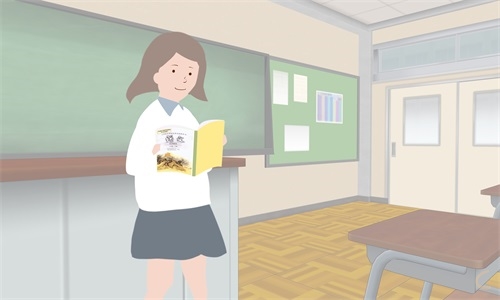初中英语高级职称说课稿5篇
通过说课稿,教师能够清晰地展现教学的核心内容、教学目标和教学步骤,使教学变得有条理和可操作性。这里给大家分享一些关于初中英语高级职称说课稿,供大家参考学习。

初中英语高级职称说课稿【篇1】
Hello, everyone,
Today I’m very pleased to have an opportunity to talk about some of my teaching ideas. My topic is Section A (1a-1c , Grammar Focus) in Unit13 . It is made up of seven parts.
1. Analysis textbook(教材分析)
2. The teaching methods(教学方法)
3. The learning methods(说学法)
4. Analysis the students(说学情)
5. The procedures of the teaching(教学步骤)
6. Blackboard design(板书设计)
7. Self evaluation.(自评)
Part 1 The analysis of the teaching material:
This lesson is about listening and speaking. It plays a very important part in the English teaching of this unit. By studying Section A , The students can improve their speaking ability, learn more about things that affect people. At the same time, we should get the students to understand better. The students should do some listening, speaking and writing, too. Of course, the students should receive some moral education. Let the students have positive attitude to dealing with things around them.
1. Teaching objects
The teaching aims are established according to Junior School English curriculum standard provision.
A.Language goals
1). Words & expressions :tense, some adjectives of feeling
2). Key sentences Loud music makes me tense. (P103)
Loud music makes me want to dance.
That movie made me sad.
B.Ability goals
Enable the students to talk about how things affect them.
Emotion & attitude goals
Enable the students to understand the effect of things upon them.
The teaching key and difficult points are established according to Section A ,Unit13 in the teaching material’s position and function.
2. Teaching Key Points
the usage of make.
3.Teaching Difficulties
Train the Ss to use make correctly.
To improve students’ listening ability.
To train students'communicativecompetence.
Part 2. The teaching methods
Task-based teaching; Cooperative learning;
Part 3. The learning methods
1). Set up six steps. It is presentation– words – pairwork – listening practice–Grammar - practice
2). Ask the students to take part in class actively and develop their cooperation in the activities .
Part 4. Analysis the students
The students have learned some words about feeling and they have know the word make. But they don’t often use English to express themselves andcommunicate with others. Some Ss are not active in the class because they are afraid of making mistakes.
Part 5. The procedures of the teaching
I have designed the following steps to train their ability of listening, speaking, reading and writing, writing , especially listening and speaking. Set up six steps. It is greeting –lead-in -presentation– words – pairwork – listening practice–Grammar – practice – homework.
Step Ⅰ Lead- in.
Show the Ss a picture and then show the teaching material.
Purpose: Arouse the students’ interest of study. Bring in new subject: Rainy days make me sad.
Step II Presentation.
Review some words about feeling , then present the sentence structure.
A: What makes him/her sad?
B: Rainy days makes him sad.
Purpose :Through this part we can consolidate what they studied yesterday,communicate with others about their feelings and prepare for the new lesson.
Step III Listening (1a, 1b: P102)
Ask the students to listen to Amy and Tina talking about the two restaurants and do the exercises.
Purpose :Train the Ss’ listening ability and prepare for later exercises.
Step IV Speaking (1c: P102)
Ask the students to talk about how music affects them. Let the Ss work in pairs and talk about how the two restaurants would affect them.
Purpose :Train the Ss’ speaking ability and prepare for later exercises.
Step V Do a survey.
After learning 1b , 1c , let the Ss do a survey about other things that affect them.
Purpose : This step can open the Ss eyesight and thought . It’s a step from textbook to real life .
Step VI Grammar
1). Sum the usage of make then help them to say out the sentence structure.
2). Do some exercises to consolidate the grammar.
Purpose: Train the Ss’ ability of understanding and using language.
Step VII Writing practice
1.List 4-5 things around you and then describe how the things affect you.
2.Composition Exams make me _______。
Purpose :I want to improve the ability of their writing. At the same time, train the ability of do-it-yourself and looking up the information by themseleves.
Part 6. Blackboard design
1. make +sb/sth+adj
eg: The news made him sad.
He tries his best to make his lessons interesting.
make +sb/sth+ do
eg: He made me wait for a long hours.
He made me do this exercise again.
在被动语态中变为:sb be made to do
2. rather 原意为相当,为副词
eg: It’s rather cold today. 今天相当冷。
rather常与would连用 “宁可,宁愿, 还是…好些”
eg: I'd rather play tennis than swim. 我不想游泳,我宁愿去打网球。
Purpose:In my opinion, the blackboard design can reflect the teacher’s ability of mastering the text and leading the students to master the text easily. In this text, I write the usage of make and rather on the blackboard in order to tell the students that this is of the importance in this class. I want to use them correctly and flexibly.
Part 7. Self evaluation.(自评)
In order to make the students the real masters in class while the teacher himself acts as director. I designed some activities to arouse the students’ interest of studying .The students can learn the target language easily .Also ,by these activities , I’ve cultivated the students’ spirit of cooperating , trained the students’ skills of listening ,speaking , reading , writing , improved the students’ ability of collecting information and dealing with the information . Help the students to form a positive attitude towards life .Thanks for listening .
初中英语高级职称说课稿【篇2】
Unit 1 How often do you exercise
Section A说课教案
1a ---1c
教材分析:本单元以“How often do you exercise ?”为话题展开教学活动。首先学会恰当地使用频率副词及短语,再学会描述课余时间的活动安排和基本饮食结构。通过复习七年级学习过的动词短语,及本单元的听力练习,各种方式的口语交际活动和写作练习,使学生积极参与,合作,从而培养学生的综合语言运用能力。教材在本单元的开篇,即本课时,安排了关于谈论课余时间的各项活动,以及初步认识和使用频率副词,为进一步地使用频率副词及动词短语做语言知识上的准备。
教学目标:
A:语言目标:恰当使用always usually often sometimes hardly ever never 等频率副词和日常活动短语:watch TV go shopping read books exercise等。
掌握句型: What do you usually do on weekends? I often go to the movies.
What does she do on weekends ? She often goes to the movies.
B:能力目标:学习描述课余时间的活动安排,初步培养学生的语言综合运用能力。
C:德育目标:培养学生的逻辑表述能力,激发学生的积极思维,并使学生互相了解,增进友谊,加强人际交往,以形成良好的人际关系。
教学重点:核心句型: What do you usually do on weekends?
I often go to the movies.
教学难点:第三人称单数谓语动词在此核心句型中的运用。
教学用具:词汇卡片 多媒体课件一套
教学过程:
Step1 Warm-up activities
(1) Do it (学生按教师的指令做动作)
T:Read books. / Do homework!/ Draw pictures/ Look at the blackboard
T: run / stop / stand up / sit down.
(2) Do as I do.(学生跟老师边说边做动作)
I read books on weekends.
I run on weekends.
I do my homework on weekends.
Step 2 Revision and presentation
(1)教师问:“What do you usually do on weekends ? ” (并且板书)让学生根据自己的实际回答 I usually …… on weekends.
(2)教师出示动词卡片 watch TV、read books 、exercise 、clean、skateboard、 play basketball、wash clothes、go shopping、 go to movies让学生认读。
(3)做游戏:“ What’s missing?” (学生先把动词卡片全部读一遍,教师从卡片中任意抽掉一张,再让学生看卡片读动词短语,然后让学生说出抽掉的是哪一张词汇卡片。)
Step 3 Pattern drill and dialogue
(1)出示词汇卡片给学生,并提问:“What do you usually do on weekends?” 引导学生回答: I usually …… on weekends.
(2)Task one “Find my group members.”
在规定 时间内填完活动表格,再向周围同学开始询问,找出与自己课外活动大致相同的同学请他或她在每项活动后面签名。
Activity
Name
(3)Look at the picture on the book ,name each activity .Then ask students to point to each picture , ask and answer in pairs . “What ’s the boy/girl doing ? ” “He/She is reading .” Check the answers on the blackboard and ask students to correct their own activities.(1a )
Step 4 Presentation and drill
(1)教师指着屏幕说:“ Now let’s see my activities on weekends. 屏幕上出现各项活动的图片并介绍。 I always read books at 6:00 in the morning. Then I usually run at 6:30. I often clean my house in the afternoon. Sometimes I watch TV, but I never watch TV too much. I hardly ever go to the movies.
(2)点击鼠标屏幕上出现频率副词及相关的百分比。
always(100%) usually(80%) often (30-50%)
sometimes(20%) hardly ever(5%) never(0%)
领读频率副词,让学生快速认读。
(3)分别点击活动图片,每个图片正面出现一个频率副词。
教师依次提问: What do you do on weekends?
引导学生用图片中的活动及副词回答,如:I usually run.
(4)TaskTwo: Making cards
每个学生把自己的课外活动做成卡片,再把频率副词做成卡片,然后一个学生问What do you do on weekends? 另一个学生分别拿一张活动卡片和频率卡片并用其进行回答。
Step 5 Practice and drill
(1)Play the recording the first time .Students only listen . Play the recording a second time . Point to the pictures . This time say , Listen to the conversation and write the letter of one activity (a through e )after the word in the list .(1b)
(2) 屏幕上出现一张一个女孩读书的图片,教师提问:
What does she do on weekends?
再点击图片出现副词often 引导学生回答 She often reads books.
(3) 点击屏幕出现 A:What do you do on weekends?
B: I often read books.
C: What does she do ?
D: She often reads books/
(4) 点击图片出现活动图片,四人小组练习对话。
(5) Task three: Do a survey “What does she /he do on weekends ?”
Name
Activity
How often
Step 6 Homework
(1) Make a conversation “What do you usually do after school ?” in groups.
(2) Collect some information about your favorite teacher with your partners ,such as his or her personality , hobby , eating habit and so on . Then introduce this teacher to us .
教学板书设计:
Unit 1. How often do you exercise ? 1a-----1c
A:What do you usually do on weekends?
B:I often go to the movies.
教学策略:根据本课时的特点,我安排了六个环节,第一个环节让学生按老师的指令做动作来调整学生的精神状态,同时又复习了一些动词,为新课做知识上的准备;在第二个环节中,通过复习旧句型“What do you usually do on weekends ? ”,引出了七年级曾学过的频率副词usually和一些动词短语,减轻学生学习新课的难度;第三环节,通过完成课本Activity 1a和Task 1来加强说和写的能力的培养;第四环节出现了本课时的重点,因为句型已掌握熟练,这些重点内容——新频率副词的使用,也迎刃而解,再通过Task Two: Making cards这一有趣的活动来加深理解;第五环节,是我在教学中的扩展和延伸,在完成课本Activity 1b和Task3的过程中,把学生们学习一般现在时态的难点,用对比的方式清楚地呈现给学生,使学生充分感知和理解,使学生在交际中对语言的认识得到升华。在第六环节中,我安排了编对话活动来加强听说能力的培养,第二题是一个开放性的作业,在锻炼学生的综合语言运用能力的同时,又让他们学会合作与交流。在本课的整个教学过程中,教学重点内容(1c)贯穿始终,这是在教学实际中对教材的调整,由于本课教材没有涉及到一般现在时态的单三形式,而它又是中学生学习英语易疏忽的问题,所以我在本课做了补充。
八年级上Unit 1 How often do you exercise?
Section B(3a—4)课堂教学设计
◆ 教材分析:
下面我要说的内容是人教版八年级上Unit 1 Section B(3a--4) Page 5,本单元以“How often do you exercise ?”为话题展开教学活动。首先让学生学会恰当地使用频率副词及短语(always, usually, often, sometimes, hardly ever, never) 再学会描述自己或他人的生活方式。通过复习已学习过的动词及短语(shop, exercise, read, go to the movies, watch TV, ,eat vegetables/fruit/junk food, ect),使学生积极参与,主动合作,让学生在完成任务的过程中,使用英语获取信息,用英语进行交流,从而培养学生运用英语的能力。本单元的Section A部分,已初步认识和使用了频率副词,为进一步使用频率副词及动词短语做语言知识上的准备。本课时主要在此基础上培养学生对语言知识点的综合运用能力,让学生学会阅读、学会写作,学会调查,让学生在体验中内化语言知识,从而培养学生对频率副词以及 how often句型的使用能力。
◆ 教学目标:
1、知识目标
(1)掌握以下词汇:
habit, try, lifestyle, grade, better, same, as, different, maybe, although, for,
of course, look after, good—better—best, healthy—healthier—healthiest
(2)掌握并会运用下列重要短语和句型:
look after = take care of the same as try to do sth. get good grades
-How often do you exercise? -I exercise every day.
-How often does she drink milk? -She drinks milk every day.
2、能力目标
读:通过学习本课时的短文,能读懂介绍个人生活方式的文章。
说:利用所学知识或提示的信息,能在短时间内复述课文。
写:能用本节所学知识,描述有关自己或熟人生活习惯的短文。
3、情感目标
通过本单元的学习,养成健康的饮食习惯,保证充足的睡眠时间,进行合理的运动锻炼,以保持健康的体魄。
◆ 教学重点:
1. 能正确运用频率副词和How often…?句型。
2. 培养学生良好的阅读习惯和运用所学知识进行书面表达的能力。
◆ 教学难点:
能运用频率副词描述自己或别人的生活方式。
◆ 教学方法:
任务型教学法和分层教学法.从学生“学”的角度设计教学活动,使学生的学习活动具有明确的目标,把注重语言本身转变为注重语言习惯,随着“任务”的不断深化,整个语言学习的过程也越来越自动化和自主化;分层教学能激发各个层次的学生获取语言信息知识的欲望,提高他们的自信心,从而培养学生学习英语的浓厚兴趣。
◆教学手段:
运用多媒体辅助教学,能使抽象的语言变得直观形象,为学生运用英语进行交际创设情景,实现师生互动,生生互动多向交流。
初中英语高级职称说课稿【篇3】
教材分析:本单元以“How often do you exercise ?”为话题展开教学活动。首先学会恰当地使用频率副词及短语,再学会描述课余时间的活动安排和基本饮食结构。通过复习七年级学习过的动词短语,及本单元的听力练习,各种方式的口语交际活动和写作练习,使学生积极参与,合作,从而培养学生的综合语言运用能力。教材在本单元的开篇,即本课时,安排了关于谈论课余时间的各项活动,以及初步认识和使用频率副词,为进一步地使用频率副词及动词短语做语言知识上的准备。
教学目标:
A:语言目标:恰当使用always usually often sometimes hardly ever never 等频率副词和日常活动短语:watch TV go shopping read books exercise等。
掌握句型: What do you usually do on weekends? I often go to the movies.
What does she do on weekends ? She often goes to the movies.
B:能力目标:学习描述课余时间的活动安排,初步培养学生的语言综合运用能力。
C:德育目标:培养学生的逻辑表述能力,激发学生的积极思维,并使学生互相了解,增进友谊,加强人际交往,以形成良好的人际关系。
教学重点:核心句型: What do you usually do on weekends?
I often go to the movies.
教学难点:第三人称单数谓语动词在此核心句型中的运用。
教学用具:词汇卡片 多媒体课件一套
教学过程:
Step1 Warm-up activities
(1) Do it (学生按教师的指令做动作)
T:Read books. / Do homework!/ Draw pictures/ Look at the blackboard
T: run / stop / stand up / sit down.
(2) Do as I do.(学生跟老师边说边做动作)
I read books on weekends.
I run on weekends.
I do my homework on weekends.
Step 2 Revision and presentation
(1)教师问:“What do you usually do on weekends ? ” (并且板书)让学生根据自己的实际回答 I usually …… on weekends.
(2)教师出示动词卡片 watch TV、read books 、exercise 、clean、skateboard、 play basketball、wash clothes、go shopping、 go to movies让学生认读。
(3)做游戏:“ What’s missing?” (学生先把动词卡片全部读一遍,教师从卡片中任意抽掉一张,再让学生看卡片读动词短语,然后让学生说出抽掉的是哪一张词汇卡片。)
Step 3 Pattern drill and dialogue
(1)出示词汇卡片给学生,并提问:“What do you usually do on weekends?” 引导学生回答: I usually …… on weekends.
(2)Task one “Find my group members.”
在规定 时间内填完活动表格,再向周围同学开始询问,找出与自己课外活动大致相同的同学请他或她在每项活动后面签名。
Activity
Name
(3)Look at the picture on the book ,name each activity .Then ask students to point to each picture , ask and answer in pairs . “What ’s the boy/girl doing ? ” “He/She is reading .” Check the answers on the blackboard and ask students to correct their own activities.(1a )
Step 4 Presentation and drill
(1)教师指着屏幕说:“ Now let’s see my activities on weekends. 屏幕上出现各项活动的图片并介绍。 I always read books at 6:00 in the morning. Then I usually run at 6:30. I often clean my house in the afternoon. Sometimes I watch TV, but I never watch TV too much. I hardly ever go to the movies.
(2)点击鼠标屏幕上出现频率副词及相关的百分比。
always(100%) usually(80%) often (30-50%)
sometimes(20%) hardly ever(5%) never(0%)
领读频率副词,让学生快速认读。
(3)分别点击活动图片,每个图片正面出现一个频率副词。
教师依次提问: What do you do on weekends?
引导学生用图片中的活动及副词回答,如:I usually run.
(4)TaskTwo: Making cards
每个学生把自己的课外活动做成卡片,再把频率副词做成卡片,然后一个学生问What do you do on weekends? 另一个学生分别拿一张活动卡片和频率卡片并用其进行回答。
Step 5 Practice and drill
(1)Play the recording the first time .Students only listen . Play the recording a second time . Point to the pictures . This time say , Listen to the conversation and write the letter of one activity (a through e )after the word in the list .(1b)
(2) 屏幕上出现一张一个女孩读书的图片,教师提问:
What does she do on weekends?
再点击图片出现副词often 引导学生回答 She often reads books.
(3) 点击屏幕出现 A:What do you do on weekends?
B: I often read books.
C: What does she do ?
D: She often reads books/
(4) 点击图片出现活动图片,四人小组练习对话。
(5) Task three: Do a survey “What does she /he do on weekends ?”
Name
Activity
How often
Step 6 Homework
(1) Make a conversation “What do you usually do after school ?” in groups.
(2) Collect some information about your favorite teacher with your partners ,such as his or her personality , hobby , eating habit and so on . Then introduce this teacher to us .
教学板书设计:
Unit 1. How often do you exercise ? 1a-----1c
A:What do you usually do on weekends?
B:I often go to the movies.
教学策略:根据本课时的特点,我安排了六个环节,第一个环节让学生按老师的指令做动作来调整学生的精神状态,同时又复习了一些动词,为新课做知识上的准备;在第二个环节中,通过复习旧句型“What do you usually do on weekends ? ”,引出了七年级曾学过的频率副词usually和一些动词短语,减轻学生学习新课的难度;第三环节,通过完成课本Activity 1a和Task 1来加强说和写的能力的培养;第四环节出现了本课时的重点,因为句型已掌握熟练,这些重点内容——新频率副词的使用,也迎刃而解,再通过Task Two: Making cards这一有趣的`活动来加深理解;第五环节,是我在教学中的扩展和延伸,在完成课本Activity 1b和Task3的过程中,把学生们学习一般现在时态的难点,用对比的方式清楚地呈现给学生,使学生充分感知和理解,使学生在交际中对语言的认识得到升华。在第六环节中,我安排了编对话活动来加强听说能力的培养,第二题是一个开放性的作业,在锻炼学生的综合语言运用能力的同时,又让他们学会合作与交流。在本课的整个教学过程中,教学重点内容(1c)贯穿始终,这是在教学实际中对教材的调整,由于本课教材没有涉及到一般现在时态的单三形式,而它又是中学生学习英语易疏忽的问题,所以我在本课做了补充。
初中英语高级职称说课稿【篇4】
教材分析:
下面我要说的内容是人教版八年级上Unit 1 Section B(3a--4) Page 5,本单元以“How often do you exercise ?”为话题展开教学活动。首先让学生学会恰当地使用频率副词及短语(always, usually, often, sometimes, hardly ever, never) 再学会描述自己或他人的生活方式。通过复习已学习过的动词及短语(shop, exercise, read, go to the movies, watch TV, ,eat vegetables/fruit/junk food, ect),使学生积极参与,主动合作,让学生在完成任务的过程中,使用英语获取信息,用英语进行交流,从而培养学生运用英语的能力。本单元的Section A部分,已初步认识和使用了频率副词,为进一步使用频率副词及动词短语做语言知识上的准备。本课时主要在此基础上培养学生对语言知识点的综合运用能力,让学生学会阅读、学会写作,学会调查,让学生在体验中内化语言知识,从而培养学生对频率副词以及 how often句型的使用能力。
教学目标:
1、知识目标
(1)掌握以下词汇:
habit, try, lifestyle, grade, better, same, as, different, maybe, although, for,
of course, look after, good—better—best, healthy—healthier—healthiest
(2)掌握并会运用下列重要短语和句型:
look after = take care of the same as try to do sth. get good grades
-How often do you exercise? -I exercise every day.
-How often does she drink milk? -She drinks milk every day.
2、能力目标
读:通过学习本课时的短文,能读懂介绍个人生活方式的文章。
说:利用所学知识或提示的信息,能在短时间内复述课文。
写:能用本节所学知识,描述有关自己或熟人生活习惯的短文。
3、情感目标
通过本单元的学习,养成健康的饮食习惯,保证充足的睡眠时间,进行合理的运动锻炼,以保持健康的体魄。
教学重点:
1、能正确运用频率副词和How often…?句型。
2、培养学生良好的阅读习惯和运用所学知识进行书面表达的能力。
教学难点:
能运用频率副词描述自己或别人的生活方式。
教学方法:
任务型教学法和分层教学法,从学生“学”的角度设计教学活动,使学生的学习活动具有明确的目标,把注重语言本身转变为注重语言习惯,随着“任务”的不断深化,整个语言学习的过程也越来越自动化和自主化;分层教学能激发各个层次的学生获取语言信息知识的欲望,提高他们的自信心,从而培养学生学习英语的浓厚兴趣。
教学手段:
运用多媒体辅助教学,能使抽象的语言变得直观形象,为学生运用英语进行交际创设情景,实现师生互动,生生互动多向交流。
初中英语高级职称说课稿【篇5】
一、说教材
1、教材的地位和作用
本课是人教版七年级英语上册第三单元第一课时。本单元是就第二单元认知物体之后学习用英语认知人,而与学生最为熟悉的人就是家庭成员。从“Is this your eraser? ”很自然过渡到“Is this your sister?” 以前学的“What is this?”转变成“Who is this?” 教材以This is my sister.为中心话题,围绕谈论有关家庭成员的用语,并学会询问别人的情况,介绍自己的家庭,谈论自己的情感。但本单元生词较多。出现在第一课时的就有十五、六个,同时还要认识到名词复数的概念及其运用。因此,本课时任务比较艰巨。
2、教学目标
结合新课程标准和大纲提出的基础教育阶段英语课程的总体目标以及本单元的教学内容我将本课教学目标设计如下:
(1)、知识目标
帮助学生学会、掌握单元单词;
使学生对复数形式有初步了解;
使学生掌握介绍他人的句型。
(2)、能力目标
通过本节课学习,学生就家庭成员相互之间能用英语简单的介绍、询问、交流。掌握基本This is/That is... These are/Those are... 等句型,培养学生实际交际的能力。同时基本上能辨别什么时候用单数什么时候用复数。
(3)、情感目标
通过介绍家人和朋友,学生对自己的家庭成员会有更清晰的印象,对学生进行亲情教育,从而激发起他们对家人的热爱。
3、教学重点及难点
结合教学目标的要求和学生的特点,我把本课的重难点设置为:
重点:熟练掌握各家庭成员的名称,理解外国文化中介绍家庭成员的方式。这个单元最主要的就是学习家庭成员英语的表达,而几乎所有的单词都集中在第一课时。所以这课时学会掌握这些单词应该是重中之重。
难点:复数的认识和正确运用。汉语表达中完全没有复数概念,这是一本书,这是三本书;除了数字的改变没有其他任何变化。而英语必须这样说This is a book. These are books.所有的单词都相应的发生了变化。因此,中国学生在学习复数的时候特别难。
二、说学情
我教学的对象是七年级学生,他们正处于青春期发育期,他们有较高的求知欲和表现欲,
希望自己的表现能得到同学和老师的认可。且该阶段学生已具备初步的语言表达能力和较强的记忆力与模拟能力。对他们所熟悉的话题,学生会更感兴趣,而本单元的话题正符合这一特点,所以我就设计任务型的课堂活动,让学生人人参与,增强他们学习的积极性和学习的自信心。
三、说教法和学法
教法:教材重视以人为本,强调素质教育。在教学中,要注意发挥学生的主体作用,把空间留给学生。抓住初中生活泼好动,表现欲强的心理特点,课堂上我设计了大量听、说、读、写的训练,启发学生动脑思考,鼓励学生大胆开口,畅所欲言,尽可能运用英语表达实际意义,从而最大限度地调动学生的积极性和主动性。教学中,我主要采用任务型教学法,情景结合教学法,分层法和通过学习五步教学法,精讲巧练,由浅入深,由易到难,由已知到未知,循序渐近地深化教学内容。展开以教师为主导,以学生为主体的师生双边活动
学法:
1. 引导学生用小组合作的方式来完成任务型教学所设计的各项活动。全班分为7个小组,每组6-7人,各组英语水平相当,并引入竞争机制。培养学生的实际能力,发展学生的合作能力。
2. 采取的教学手段是多媒体辅助教学,充分利用农村中小学现代远程教育资源,自制课件,用生动的课件调动学生的感官,进行听说读写的训练。培养学生的观察力和想象力,发展学生的思维能力。
四、说教学过程
合理的教学过程是教学成功的关键,为此我特意设计了以下教学环节:
第一步,创设情景,导入新课
出示一些实物,如钢笔、钥匙、尺子等,用下面句型引导学生与同伴之间进行交谈。复习前面学过的句型,为新课作好铺垫。
S1: Is this your pen? ----- Yes, it is.
S2: Is that her ruler? ----- No, it isn’t. It’s my ruler.
第二步,新课讲解,呈现教学内容
我先出示一张照片,通过创设情景,师生对话,引出新知识:
T:What is this? ------ Ss: It is a photo.
T: Is this your photo? ------- Ss: No, it isn’t.
T: It’s not your photo. It’s my photo. And this is my sister. 从而引出本课时重点句型: This is my sister. 并在此基础上讲解“this is...”是用来向对方介绍他人的。同时运用这句型“This is?”进行教学新单词:mother , father , sister , brother , grandfather 等所有家庭成员。让学生先对本课所要讲的内容有个初步的感知,激发学生进一步学习的动机。
第三步,反复操练,巩固运用
为了调动学生的积极性,主动深化短时记忆中的信息,并逐步向长时记忆迈进、发展。我将利用多媒体生动活泼呈现多张家庭成员图片。让学生将单词与图中人物匹配,认识家庭成员。并学会使用This / That is my... 和 These are / Those are...介绍家人和朋友,巩固知识、操练知识。在此同时,要注意与讲解名词的复数形式,以及让学生能够正确的运用。
第四步,口语操练,加深印象
学生通过前面的学习,已经对新的知识形成了初步的新知识结构,但在名词复数结构上
还存在着模糊点,这时通过一系列的综合练习可以巩固、发展及完善学生的知识结构。学生通过前面的学习,已经对新的知识形成了初步的新知识结构,但在名词复数结构上还存在着模糊点,这时通过一系列的综合练习可以巩固、发展及完善学生的知识结构。
a) 通过播放1b录音,学生听,模仿说,完成任务,巩固语言材料,培养学生听说能力。 b)让学生准备几分钟,运用本课所学的句型“This / That is ?”和“These / Those are ?”对1a 中戴夫家庭成员进行介绍。进一步巩固本课的重难点。 c) 对学生进行分组,分别完成2c对话之后。让学生用自己的照片,编出自己的对话,到前面进行对话表演。转换角色,练习对话。
第五步,课堂练习,巩固知识
在学生已在大脑中构建新的认知结构基础上,提供适当的课堂练习,不仅能让学生在实践中自我学习、自我改进、达到自我完善;而且能够充分地让学生体会到“知识的获得并不只是单方面的‘输入’过程,更重要的是知识的‘输出’” 也就是说能够根据外部实际情况对新知识准确地提取并加以运用。
因此,我会出示一些与本课语言点相关的选择题和情景对话,要求学生当场完成。课堂练习的目的在于检查学生掌握知识的情况以便教师发现学生缺漏,及时补充。同时也有助于进一步巩固,加强对本课内容的理解和运用。
第六步,课外作业布置
1. 掌握所学词汇。
2. 向同学介绍家人或朋友。






